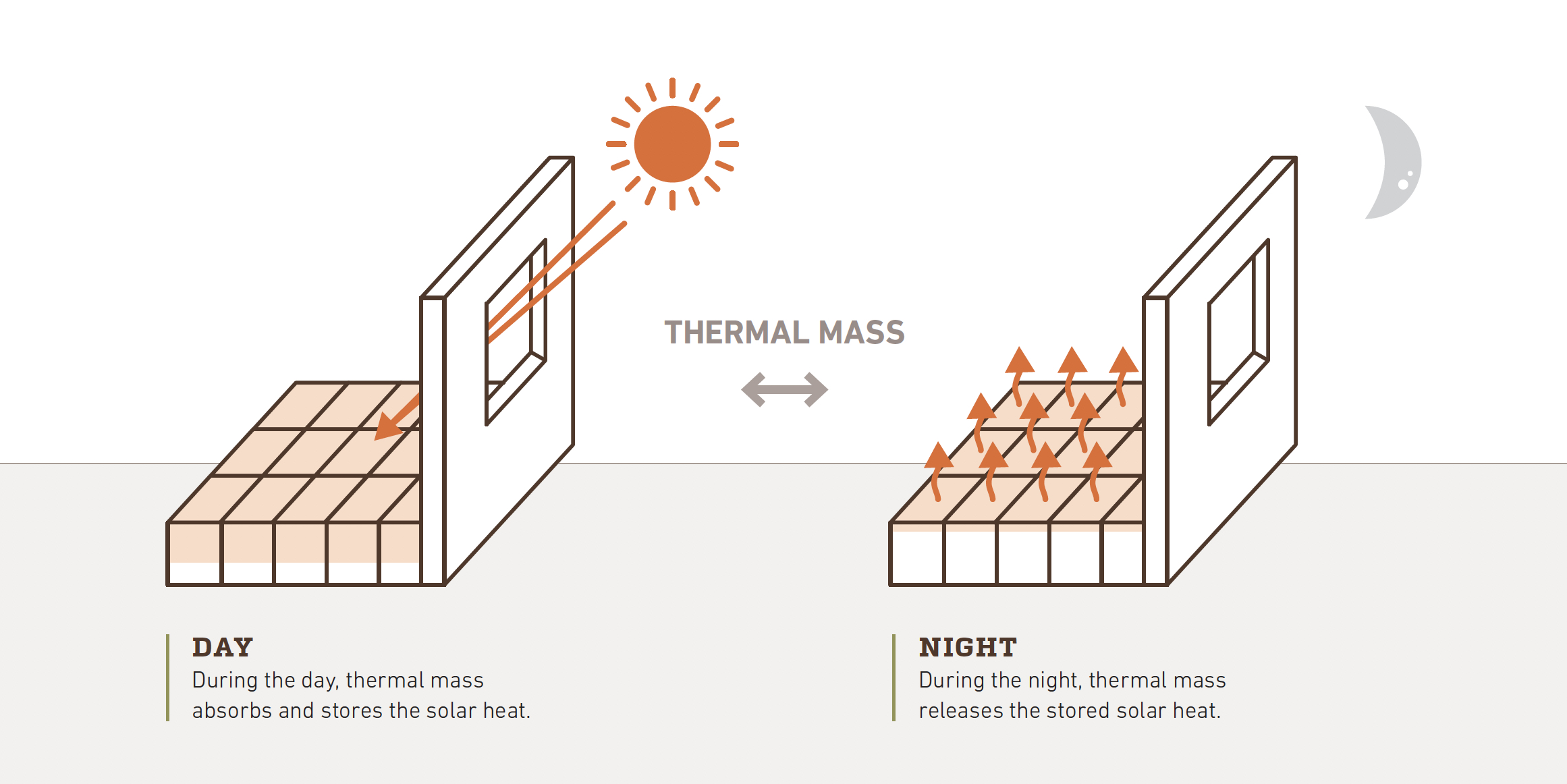Return to News
CAPITALIZING ON THERMAL MASS TO IMPROVE EFFICIENCY IN CONSTRUCTION
Masonry in the Building Envelope Can Reduce Heating, Cooling Demands

In sustainable projects, the design of the building envelope impacts materials use, indoor air quality, life-cycle performance and energy efficiency. Achieving an energy efficient envelope requires consideration of both the insulating value and the thermal mass of its materials. Thermal mass as found in masonry products helps to reduce indoor temperature swings and often leads to reduction in the size of mechanical heating and cooling systems in buildings.

Researchers have noted thermal mass is most effective if it is used on the interior of the insulation in the building envelope.
In addition to saving money on the size of the HVAC system and life cycle heating/cooling, proper use of thermal mass can contribute to reduced insulation costs. ASHRAE 90.1 recognizes that thermal mass works with insulation to reduce thermal transfer, so it requires less insulation in a thermal mass solution than in a stud wall solution. For example, a typical wall R-Value requirement of R-18 might be met by a high-thermal-mass masonry wall with an R-Value of R-7.
The International Masonry Institute notes, “Masonry systems, with the ability to enhance a building’s thermal performance, provide one of the best passive design options and result in an integrated passive design strategy that balances building performance with heating and air conditioning requirements.” They add, “Passive measures are paid for once, yet perform repeatedly over the life of the building.”
Researchers have noted thermal mass is most effective if it is used on the interior of the insulation in the building envelope. This includes load-bearing concrete masonry as part of a cavity wall system, as well as interior concrete masonry walls and interior stone applications.
Oldcastle® Architectural’s Echelon™ Masonry product line offers two masonry systems that combine the thermal mass benefits of concrete masonry with integral insulation — the InsulTech™ Insulated Concrete Masonry System (ICMS) and EnduraMax™ High Performance Wall System. Additionally, many Trenwyth® concrete masonry units offer the option for factory-installed expanded polystyrene insulation in the cells of the units. In fact, all Echelon Masonry products provide some measure of thermal mass efficiency. The use of materials with thermal mass is most advantageous where there is a big difference in outdoor temperatures from day to night (or, nighttime temperatures are at least 10 degrees cooler than the thermostat set point).
Most often this is in extremely hot, dry climates with cool nights. Research has found homes in these climates that also have exterior walls of high thermal mass need less energy for air conditioning than wood-framed houses with similar insulation but low thermal mass.
The use of building materials with thermal mass is most advantageous where there is a big difference in outdoor temperatures from day to night.
While not every project takes place in such an ideal climate, thermal mass will provide benefits in almost every environment. In variable, four-season climates, the benefits are usually maximized during spring and fall, when a building can be warmed passively by day and cooled with natural ventilation at night. In cold regions where heating systems are predominant throughout the year, thermal mass can be used to effectively store heat gains achieved during the day (through solar and/or mechanical means) to reduce mechanical heat usage to off-peak hours.
Designing a building with a high thermal mass can reduce construction costs (insulation and HVAC system costs), as well as the cost of energy over the lifetime of the building. As many masonry wall systems are of high thermal mass and have added benefits for moisture resistance and façade aesthetics, they can be a single solution for many needs.
This article was first featured in MODERN MASONRY Volume 2, Issue 1. Read the full issue here.
WANT TO LEARN MORE? SIGN UP FOR A LUNCH & LEARN
This lunch and learn will review exterior envelope R-Value requirements and masonry wall compliance options in regards to the 2012 IECC (International Energy Conservation Code). Also, review exterior wall R-Value requirements and define Continuous Insulation (CI) as well as present design opportunities and innovative wall systems that comply with the 2012 IECC.
SIGN UP FOR LUNCH & LEARN
Return to News
Stay Connected
Get the latest news and information from Echelon by signing up to receive our monthly newsletter.